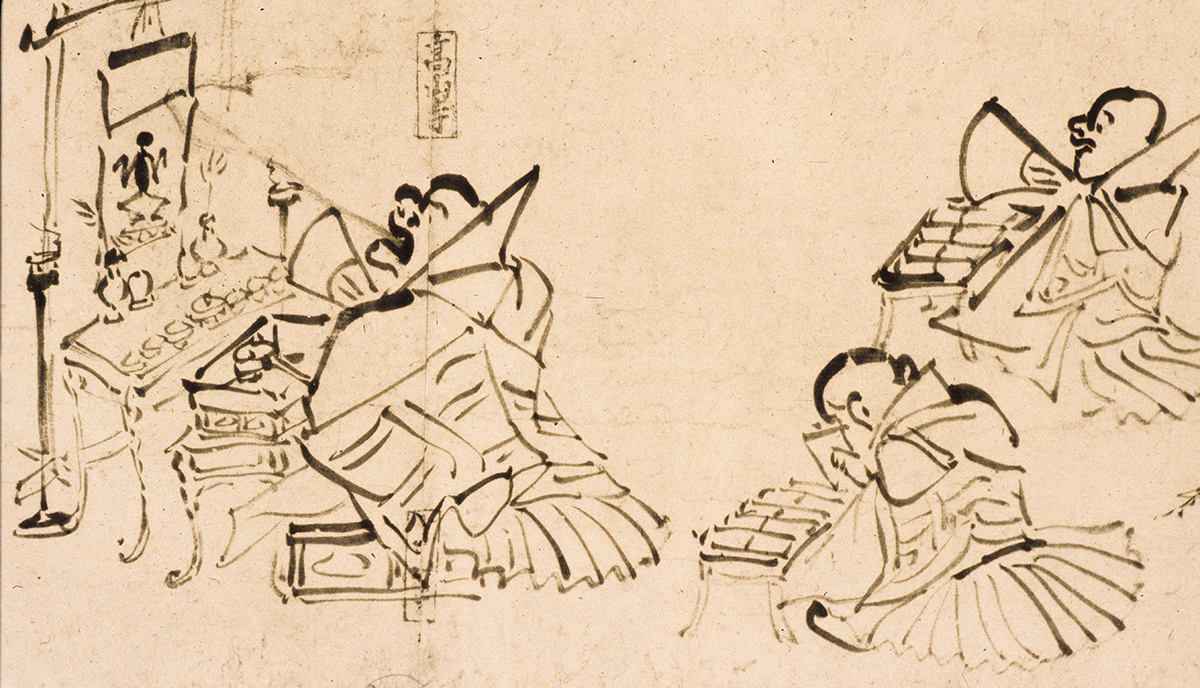Introduction to the Histories of the Visual and Material Cultures of the Japanese Archipelago

Cross-listed with Asian 392
This course takes an interdisciplinary approach to the history of Japanese visual and material cultures, introducing objects produced in the archipelago from prehistoric times through the 19th century. We shall examine groups of representative objects in roughly chronological order, considering them in light of larger thematic issues, such as conceptions of the natural world, nationalism and art history, cultural exchange, as well as the relationships between art and religion, class, politics, and society. Units will focus on the kami tradition (Shintō), Buddhism, calligraphy, tea ceremony, textiles and fashion, palace architecture, performance, and discourses of settler colonialism, center and periphery, and cross-cultural representations. Together, we will explore a fluid, dynamic world of interchange and shifting identities in which notions of "Japan" will be the subject of constant scrutiny. In the course of this class, you will develop your ability to critically analyze visual and textual sources, applying your skills to understand and reflect on the diverse cultures of the Japanese archipelago.
We will also critically examine the nature of disciplinarity, canon formation and maintenance, and the ways that "the history of Japanese art" has been framed and narrated to serve various nationalistic, colonial, and other ideological agendas. To that aim, we will go beyond the typical mediums and regions foregrounded in most art history classes (i.e. painting, sculpture, and sometimes architecture of the Yamato/Honshū elites) to consider a much broader picture of cultural production, including, but not limited to calligraphy, textiles, ceramics, performing arts, archaeological materials, and so-called "folk arts" and "decorative arts," including materials from marginalized regions, especially the northernmost and southernmost ends of the archipelago.
This class adopts a team-based learning (TBL) format and makes substantial use of simulations, surveys, video, and other interactive approaches beyond typical lectures.
No prior knowledge of East Asian history, religion, or art is required. All are welcome
Textbooks/Other Materials: All readings and other preparatory materials will be provided in pdf format. The following textbook is optional and required chapters will be available electronically:
Course Requirements: Quizzes are open book, not timed, and students can take them as many times as they like. There are no exams. There will be two shorter skill-building papers (visual and textual analysis) and one final project in which skills developed earlier in the term will be applied. Extensive support will be provided in general meetings, discussion sections, and online.
Class Format: two 80-minute general meetings and one 50 minute discussion section meeting per week
Estimated Cost of Materials: $0
Keywords: Buddhism, Shinto, Japan, Ryukyu, Okinawa, Ainu
HISTART Concentration Distributions: Asia (Includes China, Japan, India, South/Southeast Asia and the Pacific), Transhistorical
This course fulfills the LSA Humanities requirement